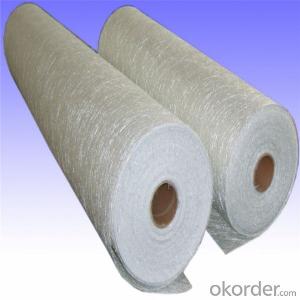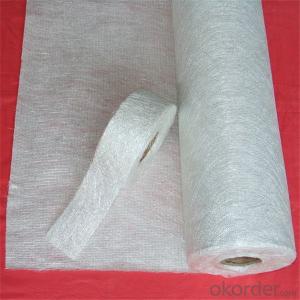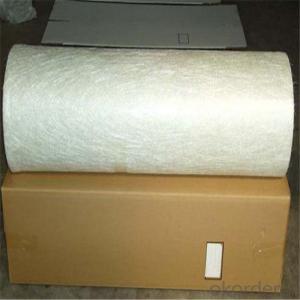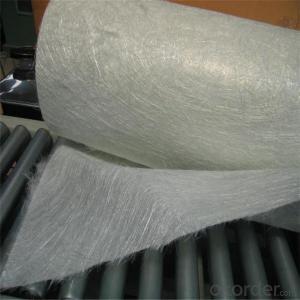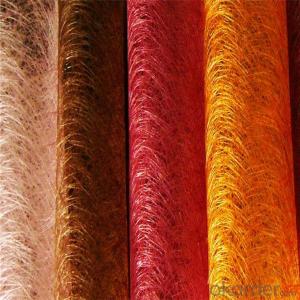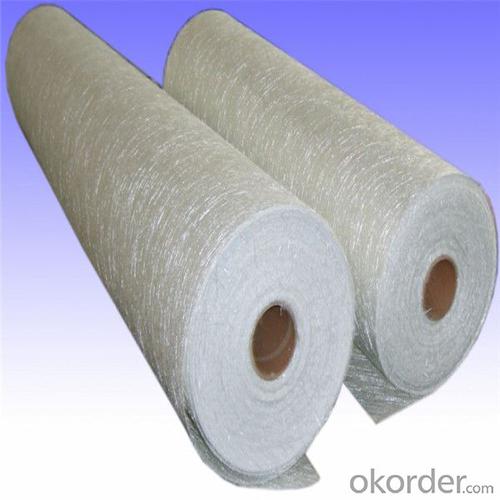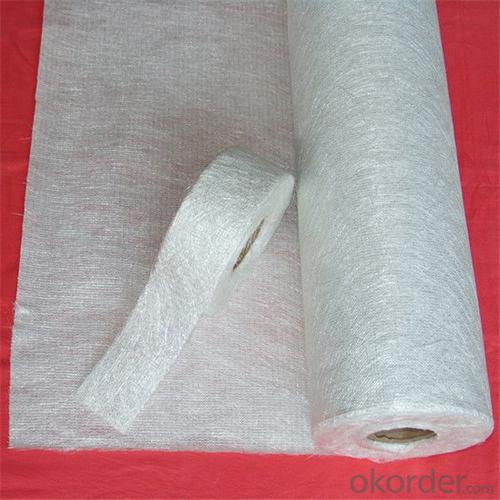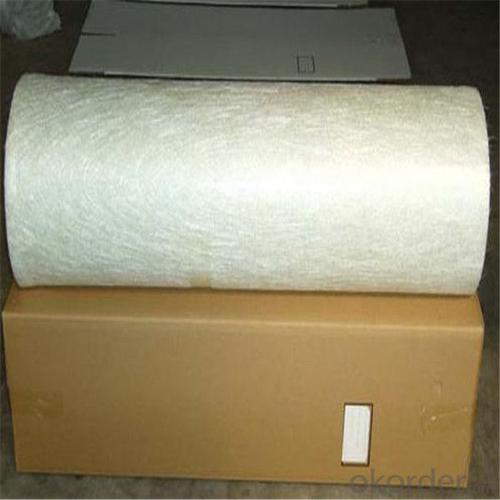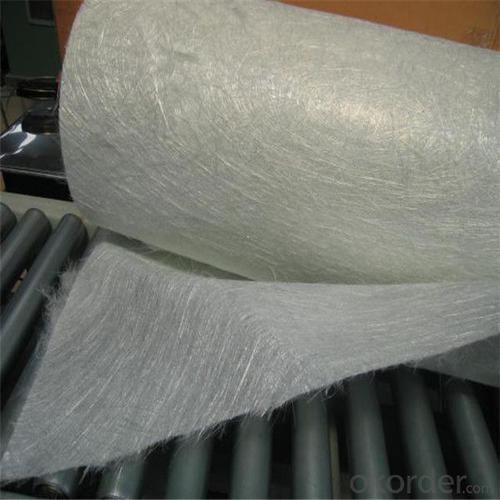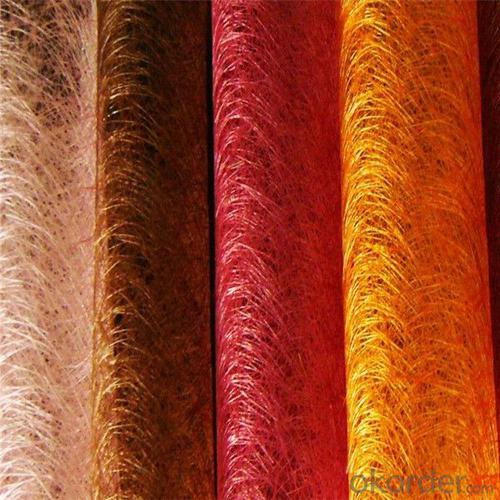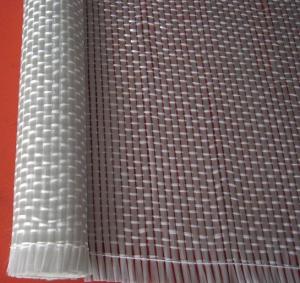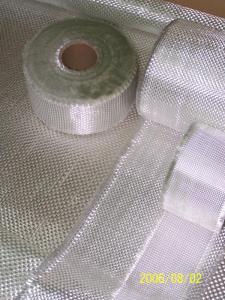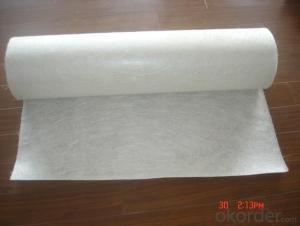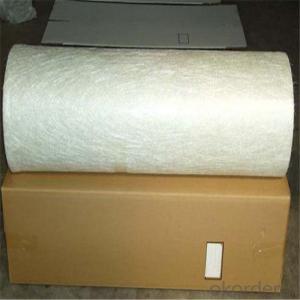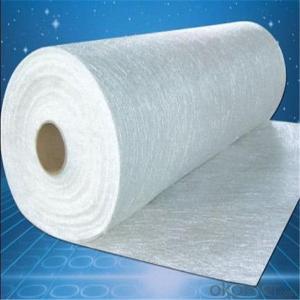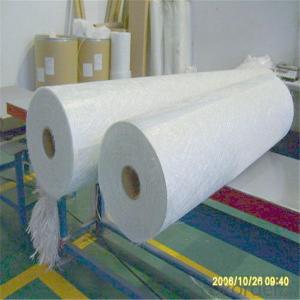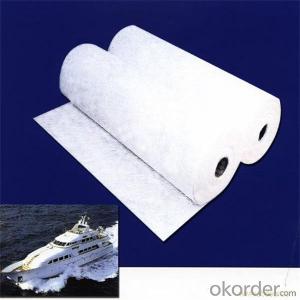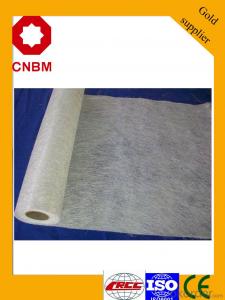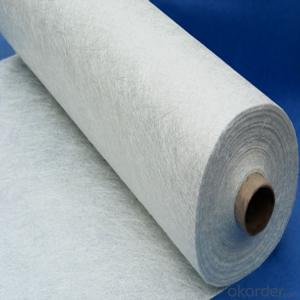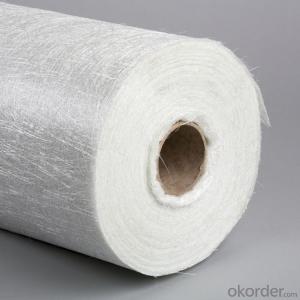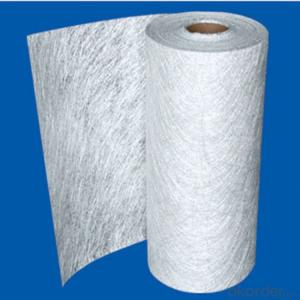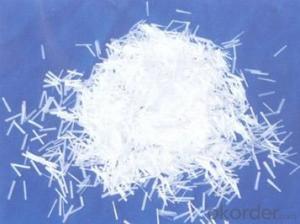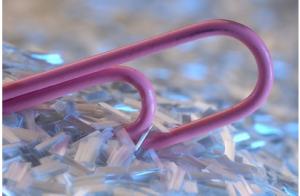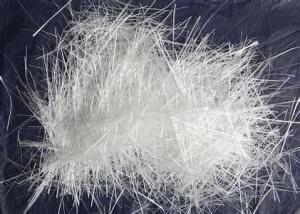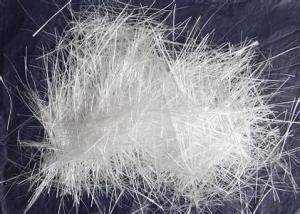Fiberglass Chopped Strand 100g E-Glass Glassfiber Chopped Stand Mat
- Loading Port:
- Tianjin
- Payment Terms:
- TT OR LC
- Min Order Qty:
- 100 m.t.
- Supply Capability:
- 100000 m.t./month
OKorder Service Pledge
OKorder Financial Service
You Might Also Like
Quick Details
| Technique: | Chopped Strand Fiberglass Mat (CSM) | Dimensions: | 225g/m2-900g/m2 | Fiberglass Type: | E-Glass |
| Place of Origin: | China (Mainland) | Brand Name: | cnbm | Model Number: | 300G-900G |
| moisture: | ≤0.2% | combustion content: | 2.1-6.3% | binder type: | emulsion or powder |
| width: | 1040,1270,2080mm |
Packaging & Delivery
| Packaging Details: | plastic bag then carton then pallet |
| Delivery Detail: | 15 days after payment |
Advantage
1. Chopped strand mat is made up from fiberglass chopped strands bonded with powder binder or emulsion binder
2. Wet out faster and easy of handling
3. Good choppability
4.thickness uniformity
Apllication
fiberglass chopped strand mat
It is used for processing and manufacturing FRP products with getting through hand lay up process, filament winding process and press molding. Typical products is including bathroom accessories, pipe, building material, automobile, furniture, vessel, cooling towers and other FRP products
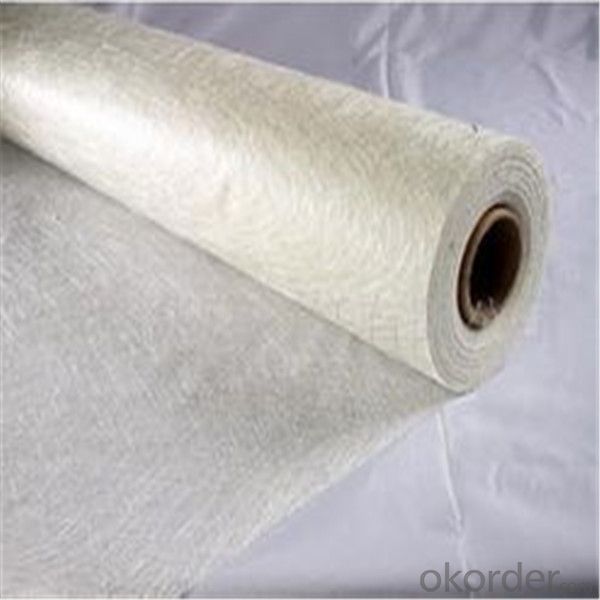
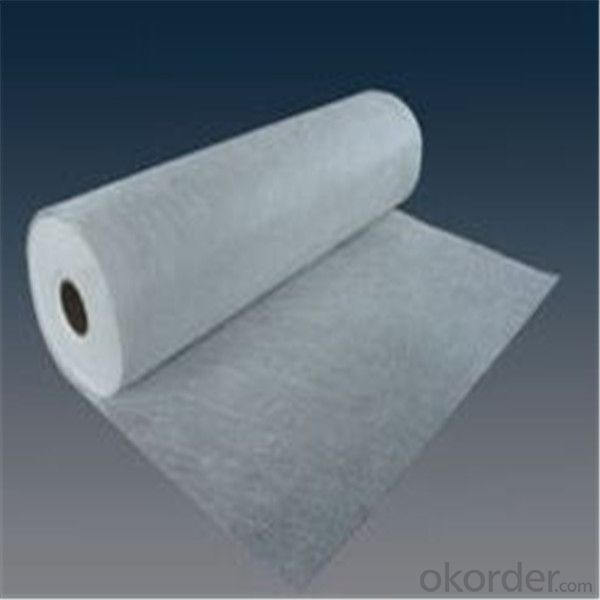
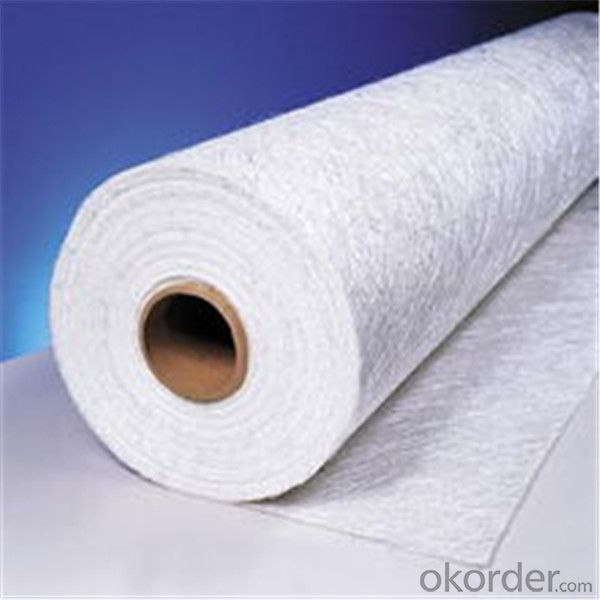
- Q: Can fiberglass chopped strand be used in the production of electrical circuit boards?
- No, fiberglass chopped strand is not typically used in the production of electrical circuit boards. Circuit boards are usually made from materials such as epoxy resin, copper, and various types of laminates, which provide the necessary electrical properties and reliability required for circuitry.
- Q: Aluminum paste carbon fiber glass fiber pulp slurry canoeing and what is the difference between what are the benefits of
- Carbon fiber solid material, high tensile strength, light weight and good quality, but the impact resistance and less expensive; glass fiber material in the performance was not as good as carbon fiber, but also tensile stretch, good durability, light weight, moderate price; aluminum elasticity is relatively poor, but the price is cheaper.
- Q: Can fiberglass chopped strand be used in energy storage applications?
- Yes, fiberglass chopped strand can be used in energy storage applications. Fiberglass is a versatile material known for its high strength-to-weight ratio and resistance to corrosion, making it suitable for various industrial applications. In energy storage, fiberglass chopped strand can be utilized to reinforce and strengthen components such as battery casings, enclosures, and structural supports. It provides excellent mechanical properties, including tensile strength and dimensional stability, which are important for ensuring the integrity and durability of energy storage systems. Additionally, fiberglass is non-conductive and non-magnetic, making it a safe and reliable choice for electric and magnetic fields associated with energy storage applications.
- Q: Is fiberglass chopped strand compatible with different release agents?
- Different release agents can be used with fiberglass chopped strand to create a barrier between the fiberglass and the mold, making it easier to remove the finished product. Depending on the specific application and requirements, various release agents like silicone-based, wax-based, or PVA (polyvinyl alcohol) release agents can be applied to the fiberglass chopped strand. By using these release agents, sticking or adhesion of the fiberglass to the mold is prevented, ensuring effortless demolding. It is crucial to select an appropriate release agent that suits the type of fiberglass and desired surface finish. Furthermore, achieving optimal results requires proper application and curing of the release agent.
- Q: What are the creep resistance properties of fiberglass chopped strand?
- The ability of fiberglass chopped strand to withstand deformation or elongation under prolonged or sustained loading or stress is referred to as its creep resistance. Fiberglass chopped strand is renowned for its high creep resistance, meaning it can endure continuous stress without significant deformation or elongation over time. This characteristic is particularly vital in applications where the material is subjected to constant or long-term stress, such as in structural components or load-bearing applications. The specific creep resistance properties of fiberglass chopped strand may differ based on factors like the type and quality of the resin used, the length and alignment of the chopped strands, and the manufacturing process. However, overall, fiberglass chopped strand displays excellent creep resistance, making it a favored choice in various industries where durability and long-term performance are of utmost importance.
- Q: How is fiberglass chopped strand used for thermal insulation?
- Fiberglass chopped strand is commonly used for thermal insulation due to its unique properties. Firstly, the fibers are made from molten glass which is then cooled and spun into fine strands. These strands are then chopped into shorter lengths, usually around 1-3 inches, and mixed with a binder to form a loose mat or blanket. The chopped strand mat is then used as a layer of insulation in various applications. Its primary function is to trap air within its fibers, creating a barrier that reduces heat transfer. Air is a poor conductor of heat, so the trapped air pockets within the mat act as an effective insulator, preventing heat from escaping or entering the insulated area. Furthermore, fiberglass chopped strand insulation is non-combustible, meaning that it does not contribute to the spread of fire. This makes it a particularly safe choice for thermal insulation in buildings and other structures. It also offers excellent acoustic insulation properties, reducing noise transmission through walls and floors. Another advantage of fiberglass chopped strand insulation is its durability. It does not degrade or lose its insulating properties over time, making it a long-lasting solution for thermal insulation. It is also resistant to moisture, mold, and pests, ensuring a consistently high level of insulation performance. In summary, fiberglass chopped strand is used for thermal insulation due to its ability to trap air, its non-combustible nature, acoustic insulation properties, durability, and resistance to moisture and pests. Its versatility makes it a popular choice for a wide range of applications, providing efficient and reliable thermal insulation for both residential and commercial buildings.
- Q: Can fiberglass chopped strand be used in the production of automotive interiors?
- Yes, fiberglass chopped strand can be used in the production of automotive interiors. It is commonly used for reinforcing plastic components, providing strength and durability to various interior parts such as door panels, dashboards, and seat backs. The fiberglass chopped strand helps improve the overall quality and performance of these automotive interior components.
- Q: How is fiberglass chopped strand incorporated into composite manufacturing processes?
- Fiberglass chopped strand is incorporated into composite manufacturing processes by mixing it with resin to create a reinforced composite material. The chopped strands are evenly distributed throughout the resin, providing strength and reinforcement to the final composite product. This mixture is then molded or laid up in specific shapes or layers and allowed to cure or solidify, resulting in a durable and lightweight composite material.
- Q: What are the typical fatigue properties of fiberglass chopped strand composites?
- The typical fatigue properties of fiberglass chopped strand composites depend on various factors such as the type of resin matrix, fiber orientation, and manufacturing process. However, overall, fiberglass chopped strand composites exhibit good fatigue resistance compared to other materials. One important factor in determining the fatigue properties of fiberglass chopped strand composites is the resin matrix used. Different resin systems have different fatigue characteristics, and the choice of resin can significantly impact the fatigue life of the composite. Generally, epoxy resins are commonly used in fiberglass composites and have good fatigue resistance, providing long-lasting performance under cyclic loading conditions. Fiber orientation is another critical aspect affecting the fatigue properties of the composites. The orientation of the chopped fibers within the matrix can influence the fatigue strength and durability of the composite. Typically, composites with aligned fibers exhibit higher fatigue strength compared to randomly oriented fibers. Additionally, the manufacturing process employed plays a role in determining the fatigue properties. Factors like fiber volume fraction, curing conditions, and manufacturing defects can affect the fatigue behavior of the composite. Proper manufacturing techniques, including controlling fiber content and minimizing defects, can enhance the fatigue resistance of the fiberglass chopped strand composites. Overall, fiberglass chopped strand composites generally demonstrate good fatigue properties. They are known for their high strength-to-weight ratio, excellent resistance to cyclic loading, and ability to withstand repeated stress. These properties make them suitable for various applications, including aerospace, automotive, marine, and sporting goods industries. However, it is important to consider the specific resin, fiber orientation, and manufacturing process to accurately determine the fatigue properties of a particular fiberglass chopped strand composite.
- Q: How does the dimensional stability of fiberglass chopped strand compare to other reinforcing materials?
- Fiberglass chopped strand is widely recognized for its exceptional dimensional stability, surpassing that of other reinforcement materials. Its remarkable resistance to moisture, temperature variations, and chemical exposure ensures its ability to retain its shape and structural integrity over extended periods. In contrast to steel or aluminum, fiberglass undergoes minimal expansion or contraction in the face of temperature fluctuations. Consequently, fiberglass components remain unaffected by warping, deformation, or alterations in their original dimensions amidst diverse environmental conditions. When compared to organic reinforcement materials like wood or natural fibers, fiberglass presents superior dimensional stability. Organic materials are susceptible to swelling, shrinking, or warping when exposed to moisture, heat, or fluctuations in humidity levels. Conversely, fiberglass remains largely impervious to these factors, establishing itself as a more dependable option for applications demanding critical dimensional stability. All in all, fiberglass chopped strand is widely regarded as one of the industry's leading choices for impeccable dimensional stability. Its consistency and durability over time render it highly favored for a broad spectrum of applications.
Send your message to us
Fiberglass Chopped Strand 100g E-Glass Glassfiber Chopped Stand Mat
- Loading Port:
- Tianjin
- Payment Terms:
- TT OR LC
- Min Order Qty:
- 100 m.t.
- Supply Capability:
- 100000 m.t./month
OKorder Service Pledge
OKorder Financial Service
Similar products
Hot products
Hot Searches
Related keywords
